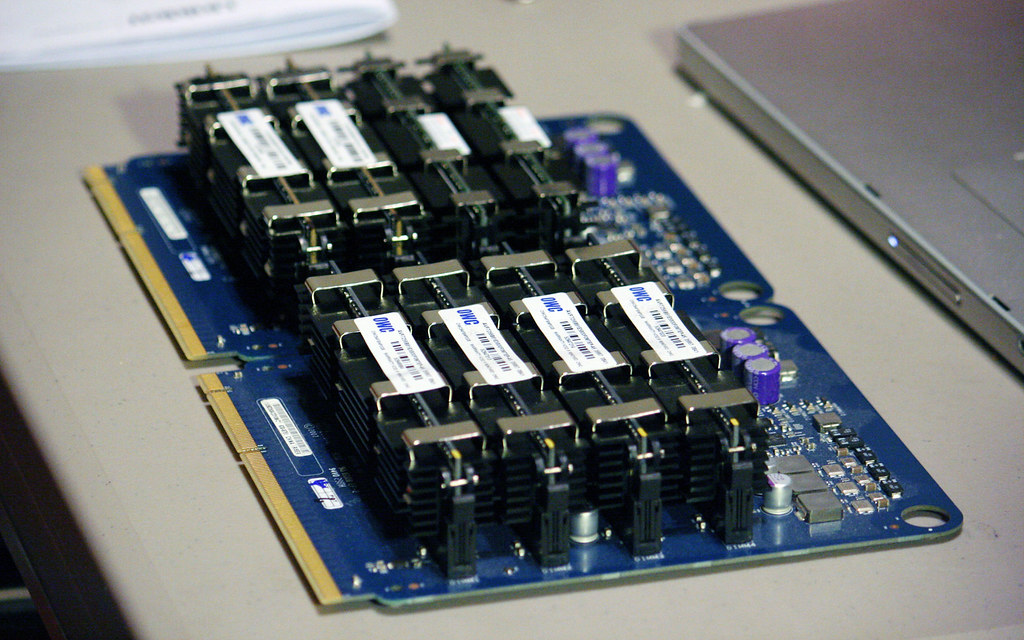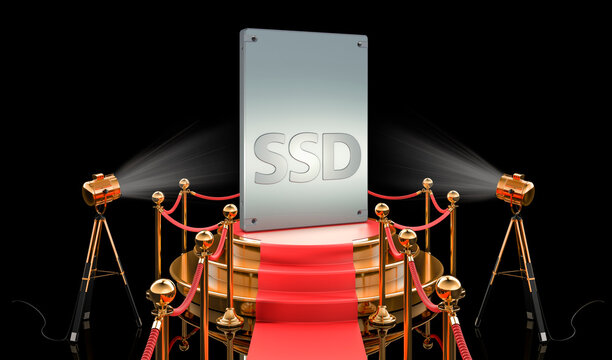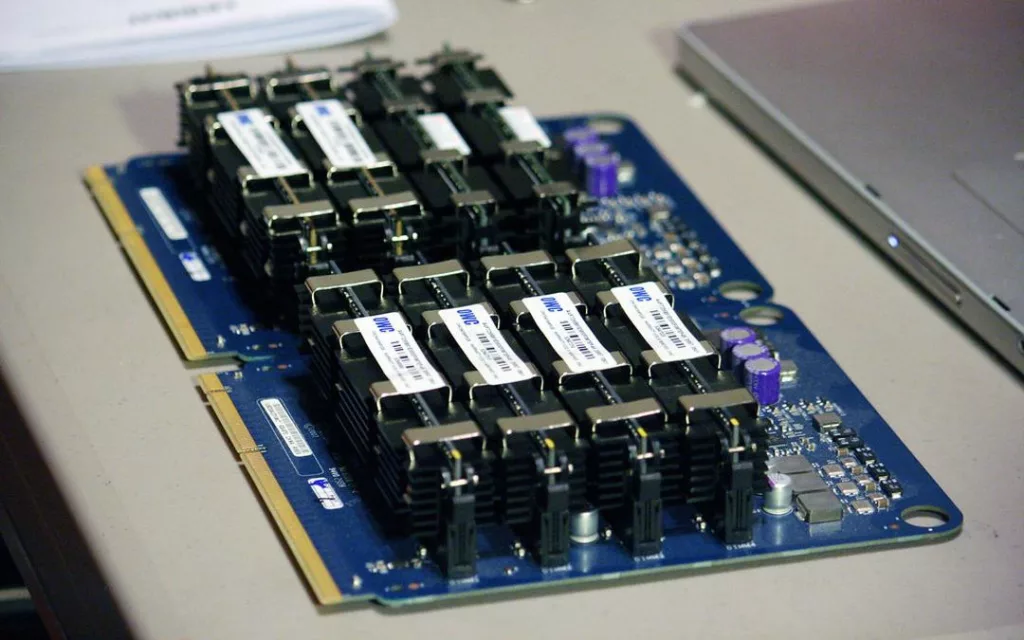Benefits of Upgrading to the Best SSD Drive
If you’re still using a traditional hard disk drive (HDD) in your computer, it’s time to consider upgrading to the best SSD drive available on the market today. Not only will you experience faster boot-up times and improved performance, but you’ll also enjoy reduced heat and noise levels, as well as a longer lifespan for your device. Here are some of the benefits of upgrading to the best SSD drive:
1. Faster Performance and Boot-Up Times
The best SSD drives offer lightning-fast read and write speeds, resulting in faster performance and boot-up times for your computer. This means you’ll be able to open programs and files quickly, and enjoy a smoother overall computing experience.
2. Reduced Heat and Noise
Because SSD drives have no moving parts, they generate less heat and noise compared to traditional HDDs. This means your computer will run cooler and quieter, making it more comfortable to use for extended periods.
3. Longer Lifespan
Unlike traditional HDDs, which use spinning disks to store data, SSD drives use flash memory chips. This means they’re less susceptible to physical damage and wear and tear, resulting in a longer lifespan for your device.

Different Types of SSD Drives
There are several types of SSD drives available on the market today, each with their own unique features and benefits. Here’s a breakdown of the most common types of SSD drives:
1. SATA SSDs
Serial ATA (SATA) SSDs are the most common type of SSD drive and are compatible with most computers. They use the same interface as traditional HDDs, making them easy to install in most devices. SATA SSDs are available in various sizes and capacities, with some offering up to 4TB of storage space.
2. NVMe SSDs
Non-Volatile Memory Express (NVMe) SSDs offer faster read and write speeds compared to SATA SSDs. They use a newer interface that is optimized for flash storage, resulting in faster data transfer rates. NVMe SSDs are available in various form factors, including PCIe and M.2, and are ideal for high-performance applications such as gaming and video editing. According to an article on Tom’s Hardware, NVMe SSDs such as the Samsung 990 Pro and WD Black SN850X are among the top picks for high-performance applications.
3. M.2 SSDs
M.2 SSDs are a type of NVMe SSD that are designed to be smaller and more compact than traditional SSDs. They are available in various sizes and capacities and are ideal for use in laptops and other small devices. M.2 SSDs use the PCIe interface and offer faster read and write speeds compared to SATA SSDs. According to an article on PCMag, the Crucial P5 Plus and SK hynix Gold P31 are among the recommended M.2 SSDs available on the market.
When choosing the right SSD drive for your needs, it’s important to consider the type of interface, form factor, and capacity that will work best for your device. In the next section, we’ll take a closer look at some of the other factors you should consider when choosing the best SSD drive for your computer.

Factors to Consider When Choosing the Best SSD Drive
When choosing the best SSD drive for your computer, there are several factors to consider that will help you make an informed decision. Here are some of the most important factors to keep in mind:
1. Capacity
One of the most important factors to consider when choosing an SSD drive is its capacity. The capacity of an SSD drive is measured in gigabytes (GB) or terabytes (TB) and determines how much data the drive can store. According to an article on PC World, the sweet spot for SSD capacity is currently between 500GB to 1TB, but it ultimately depends on your individual needs.
2. Speed
Another important factor to consider when choosing an SSD drive is its speed. The speed of an SSD drive is determined by its read and write speeds, which are measured in megabytes per second (MB/s). According to an article on PC Gamer, NVMe PCIe-based SSDs offer faster speeds compared to SATA-based equivalents.
3. Form Factor
SSD drives come in various form factors, including 2.5-inch, M.2, and PCIe. It’s important to choose the form factor that is compatible with your device. According to an article on Engadget, the Crucial MX500 is the best all-round 2.5-inch SSD, while the Samsung T7 is the best portable drive.
4. Warranty and Endurance
When choosing an SSD drive, it’s important to consider the warranty and endurance rating of the drive. The warranty of an SSD drive typically ranges from three to five years, and some drives may come with a longer warranty. The endurance rating of an SSD drive refers to how many times it can be rewritten before it starts to degrade. According to an article on PCMag, the Samsung SSD 980 and Crucial P3 are among the top-rated internal SSDs with good endurance ratings.
5. Price
Finally, it’s important to consider the price of an SSD drive when choosing the best one for your needs. SSD drives can range in price from less than $50 to several hundred dollars, depending on their capacity, speed, and other features. It’s important to choose a drive that fits within your budget while still meeting your performance needs. According to an article on Tom’s Hardware, the Sabrent Rocket 4 Plus and Patriot Viper VPR400 are among the recommended options for budget-conscious buyers.

How to Choose the Right SSD Drive for Your Needs
Choosing the right SSD drive can be a daunting task, especially if you’re not familiar with the different types and features available. Here are some tips to help you choose the right SSD drive for your needs:
1. Determine Your Needs
The first step in choosing the right SSD drive is to determine your needs. Consider what you’ll be using the SSD drive for and what features are most important to you. If you’re a gamer or video editor, for example, you’ll likely want a drive with a fast read and write speed.
2. Check Compatibility
Before you buy an SSD drive, check to make sure it’s compatible with your device. Consider the form factor, interface, and other factors to ensure the drive will work with your computer or other device.
3. Consider Capacity
Consider how much storage space you’ll need when choosing an SSD drive. If you’re using the drive for gaming or other high-performance applications, you’ll likely want a drive with a larger capacity. However, if you’re using the drive for basic tasks like web browsing and word processing, a smaller capacity may be sufficient.
4. Check Reviews
Before you make a final decision, be sure to check reviews of the SSD drives you’re considering. Look for reviews from reputable sources like Tom’s Hardware](https://www.tomshardware.com/reviews/best-ssds,3891.html) and [PCMag to see how the drives perform in real-world tests.
5. Consider Price
Finally, consider the price of the SSD drive when making your decision. While it’s important to choose a drive that meets your needs, you don’t want to overspend on features you don’t need. Look for a drive that fits within your budget while still offering the performance and features you need.
Benefits of Upgrading to an SSD Drive
Upgrading to an SSD drive can offer several benefits over traditional hard disk drives (HDDs). Here are some of the key benefits of upgrading to an SSD drive:
1. Faster Speeds
One of the most significant benefits of upgrading to an SSD drive is faster speeds. SSD drives use flash memory to store data, which allows them to read and write data much faster than traditional HDDs. This can result in faster boot times, faster application load times, and improved overall performance.
2. Improved Durability
SSD drives are more durable than traditional HDDs because they don’t have any moving parts that can break or fail. This makes them more resistant to drops, bumps, and other physical damage.
3. Lower Power Consumption
SSD drives use less power than traditional HDDs, which can help to extend the battery life of laptops and other devices. This is because SSD drives don’t need to spin up a disk platter to read and write data, which requires more power.
4. Quieter Operation
Because SSD drives don’t have any moving parts, they operate much more quietly than traditional HDDs. This can be beneficial for users who want a quieter computing experience.
5. More Storage Space
While SSD drives tend to be more expensive than traditional HDDs, they also offer more storage space for their size. This can be beneficial for users who need to store large amounts of data but don’t want to sacrifice performance.
Overall, upgrading to an SSD drive can offer significant performance and durability benefits over traditional HDDs. While they may be more expensive, the improved performance and longevity can make them a worthwhile investment for many users.

How to Install an SSD Drive
Installing an SSD drive can be a straightforward process, but it’s important to follow the proper steps to ensure a successful installation. Here’s a step-by-step guide on how to install an SSD drive:
1. Back Up Your Data
Before you install a new SSD drive, it’s important to back up your data to ensure you don’t lose any important files or documents. You can back up your data using an external hard drive, cloud storage, or another backup solution.
2. Choose Your Installation Method
There are two main ways to install an SSD drive: as a secondary drive or as a replacement for your existing boot drive. If you’re installing the SSD drive as a secondary drive, you’ll need to connect it to an available SATA port on your motherboard. If you’re replacing your existing boot drive, you’ll need to clone your existing drive onto the new SSD drive.
3. Open Your Computer
To install the SSD drive, you’ll need to open your computer’s case. Be sure to turn off your computer and unplug it from the power source before opening the case.
4. Install the SSD Drive
If you’re installing the SSD drive as a secondary drive, you’ll need to connect it to an available SATA port on your motherboard. If you’re replacing your existing boot drive, you’ll need to remove the existing drive and replace it with the new SSD drive.
5. Connect the Data and Power Cables
Once the SSD drive is installed, you’ll need to connect the data and power cables. Use a SATA data cable to connect the SSD drive to an available SATA port on your motherboard, and use a SATA power cable to connect the drive to your power supply.
6. Boot Up Your Computer
Once the SSD drive is installed and connected, you can close your computer’s case and boot up your computer. If you installed the SSD drive as a secondary drive, you’ll need to format and partition the drive before you can use it.
7. Restore Your Data
If you backed up your data before installing the SSD drive, you can restore your data onto the new drive. If you cloned your existing boot drive onto the new SSD drive, your data should already be restored.
Overall, installing an SSD drive can be a straightforward process if you follow the proper steps and take the necessary precautions. By upgrading to an SSD drive, you can enjoy faster speeds and improved performance on your computer.
SSD Maintenance and Care
While SSD drives are generally more durable and reliable than traditional HDDs, they still require some maintenance and care to ensure they continue to perform well over time. Here are some tips for maintaining and caring for your SSD drive:
1. Keep Your Drive Cool
Heat can shorten the lifespan of your SSD drive, so it’s important to keep it cool. Make sure your computer has adequate cooling systems, such as fans or liquid cooling, to prevent your SSD drive from overheating.
2. Avoid Physical Damage
While SSD drives are more durable than traditional HDDs, they can still be damaged by physical impact or shock. Avoid dropping your computer or jarring it while it’s in use to prevent damage to your SSD drive.
3. Don’t Overfill Your Drive
While SSD drives offer more storage space than traditional HDDs, it’s still important to avoid overfilling your drive. Keep at least 10-20% of your drive’s capacity free to ensure it continues to perform well over time.
4. Keep Your Firmware Up to Date
Updating your SSD drive’s firmware can help to improve its performance and fix any bugs or issues. Check the manufacturer’s website regularly for firmware updates and install them as soon as they become available.
5. Use TRIM
TRIM is a command that helps to optimize the performance of your SSD drive by clearing unused data. Make sure TRIM is enabled on your computer to keep your SSD drive running smoothly.
6. Avoid Defragmentation
Unlike traditional HDDs, SSD drives don’t need to be defragmented. In fact, defragmentation can actually shorten the lifespan of your SSD drive and cause performance issues. Avoid defragmenting your SSD drive to keep it running smoothly.
By following these tips, you can help to maintain and care for your SSD drive, ensuring it continues to perform well over time and providing you with reliable storage for your important data.
SSD Drive Shopping Tips
When shopping for an SSD drive, there are several factors to consider to ensure you get the best drive for your needs. Here are some tips to help you choose the right SSD drive:
1. Understand Your Needs
Before you start shopping for an SSD drive, it’s important to understand your needs. Consider factors such as the amount of storage space you need, the speed you require, and your budget.
2. Choose the Right Form Factor
SSD drives come in several form factors, including 2.5-inch, M.2, and PCIe. Choose the right form factor for your computer to ensure compatibility.
3. Consider Performance
When choosing an SSD drive, consider its performance. Look for drives with high read and write speeds, as well as low access times.
4. Check Compatibility
Before purchasing an SSD drive, check that it’s compatible with your computer’s motherboard and operating system. This can help to prevent compatibility issues and ensure a smooth installation process.
5. Look for Warranty and Endurance Ratings
When shopping for an SSD drive, look for drives with a solid warranty and endurance rating. This can help to ensure the drive lasts for a long time and provide peace of mind.
6. Read Reviews
Before making a purchase, read reviews from other users to get an idea of the drive’s performance and reliability. Check websites such as Amazon, Newegg, and Best Buy for user reviews.
7. Compare Prices
Finally, compare prices from different retailers to ensure you get the best deal on your SSD drive. Look for deals and discounts to save money on your purchase.
By following these shopping tips, you can choose the right SSD drive for your needs and ensure you get the best performance and value for your money.
Wrapping Up
In conclusion, upgrading to an SSD drive can provide a significant boost to your computer’s performance, allowing you to enjoy faster speeds and improved reliability. By following the steps outlined in this article, you can install an SSD drive on your computer and maintain it to ensure it continues to perform well over time.
Remember to consider your needs when shopping for an SSD drive and choose the right drive for your computer’s form factor and performance requirements. By following these tips, you can choose a reliable SSD drive that provides excellent value for your money.
Thank you for reading our article on how to install an SSD drive and maintain it. If you enjoyed this content, be sure to check out our other articles on computer hardware and software.
FAQs
Who makes the best SSD drive for gaming?
Samsung and WD Black are top picks for high-performance gaming.
What is the difference between SATA and NVMe SSD drives?
SATA is slower but cheaper, while NVMe is faster but more expensive.
How much storage space do I need for an SSD drive?
At least 1TB is recommended for gaming and high-performance applications.
Who should consider upgrading to an SSD drive?
Anyone looking to improve their computer’s performance and reliability.
What should I look for in an SSD drive warranty?
Look for a solid warranty and endurance rating to ensure long-term reliability.
What is the best way to maintain an SSD drive?
Keep it cool, avoid physical damage, and don’t overfill the drive.
